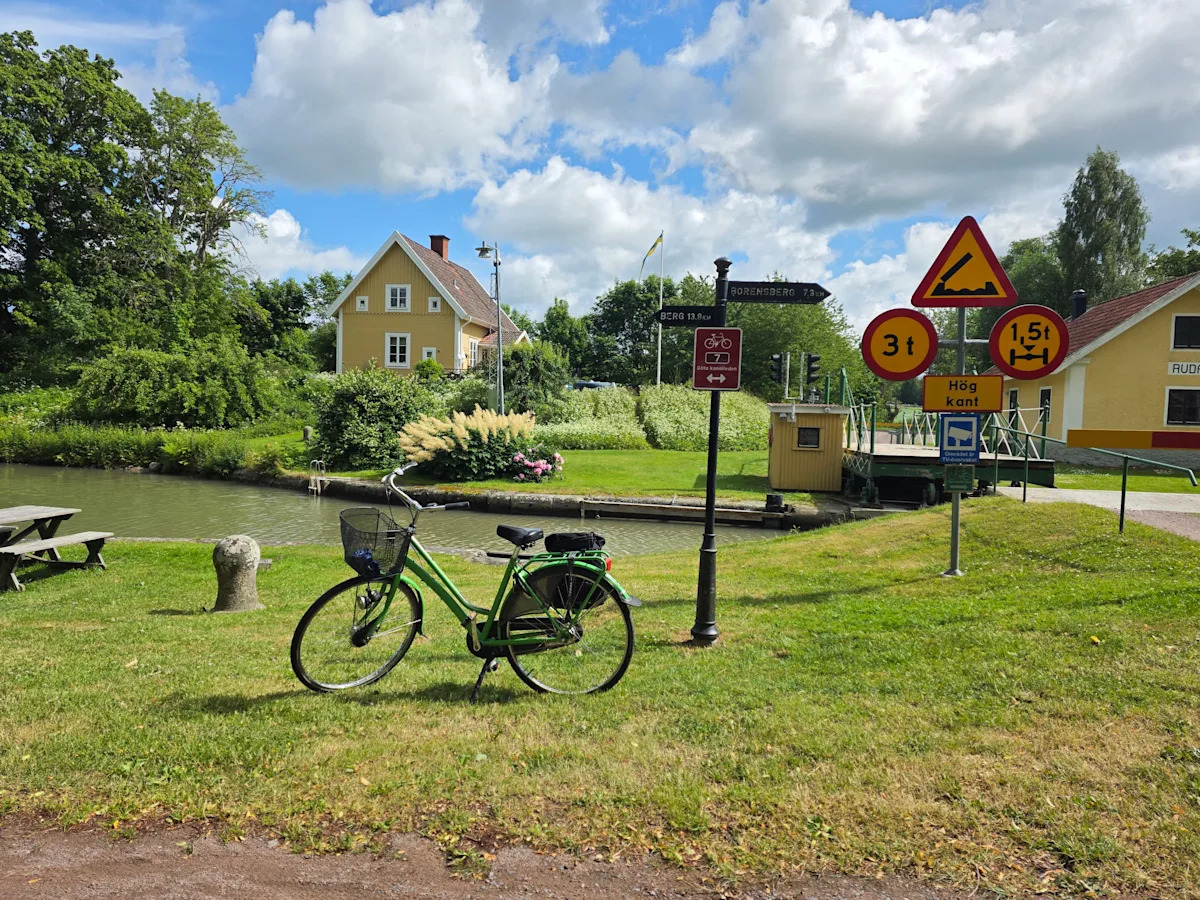Most trips to Europe orbit big cities and long lines. The Göta Canal offers something else entirely. It cuts across Sweden’s center, past lakes and quaint farms, with the occasional sheep traffic jam along the way. This is quiet travel that is built for motion without hurry.
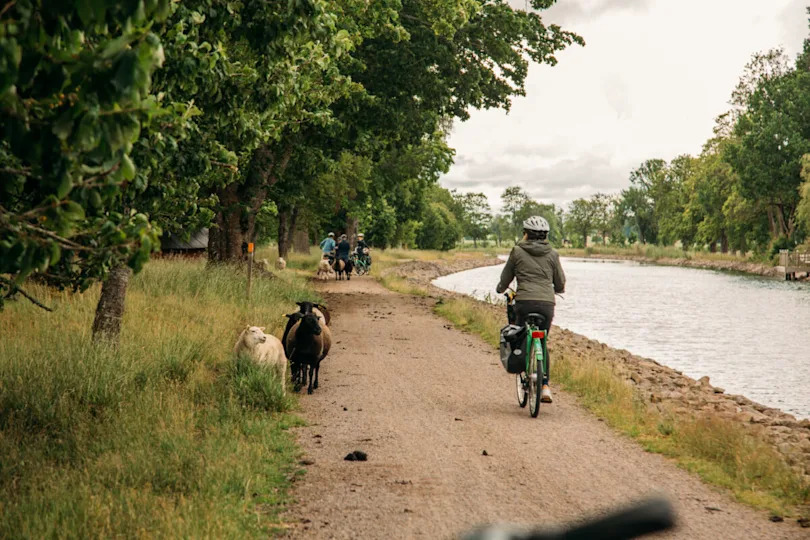
I joined a small group of journalists to cycle sections of the Göta Canal over four days. The pace stayed easy and the scenery endlessly calm. It’s not an adrenaline trip, but it’s perfect if you want a scenic, low-stress ride through the Swedish countryside, the kind that clears your head without wearing you out.
Starting in Linköping
For me, the trip began in Linköping, about three hours by train from Stockholm. The ride was simple and much better than wrangling a rental car. Plus, it is beautiful.
I stayed the night at the Park Hotel, a quirky spot right across from the station. The place takes its cue from the British sitcom Fawlty Towers. The eccentric decor made a lot more sense once I learned this!

Linköping does have a small airport, but note that the flights are far and few between. If you have a connection flight to catch, delays can be catastrophic. The train from Stockholm is your safest bet if you are on a tight schedule. (I learned that firsthand!)
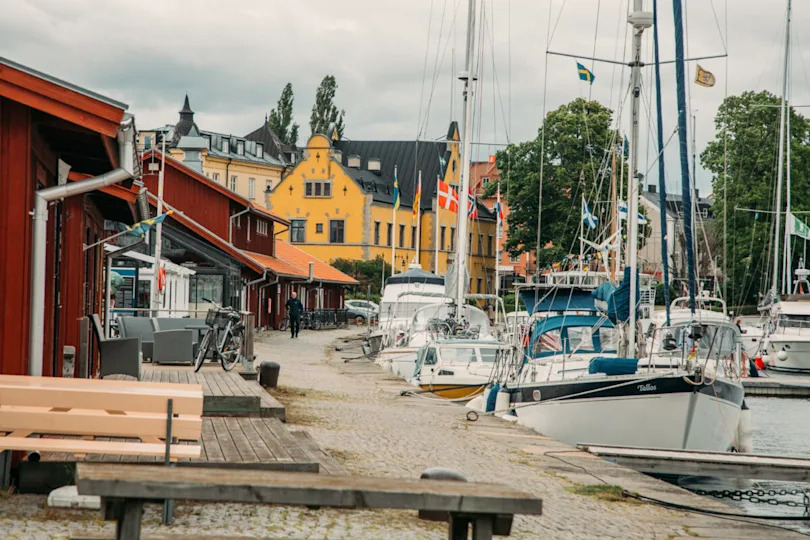 Motala and the Canal’s Beginning
Motala and the Canal’s Beginning
A short bus ride dropped me in Motala, where the Göta Canal spills into Lake Vättern. It’s a gentle place to start with flat paths and boats inching up and down through the locks.
Motala is where I picked up my rental bike. You can pick from a variety of spots along the canal to rent a bike if you do not wish to bring your own. Learn more here.
I checked into Hotel Nostalgi, which doubles as a car museum. This collection began as one person’s hobby and now fills an entire wing, we’re talking vintage Rolls-Royces, gleaming motorcycles, even jukeboxes, and rooms filled with old phones and cameras. Finding my first cellphone in the display case was a fun trip down memory lane!
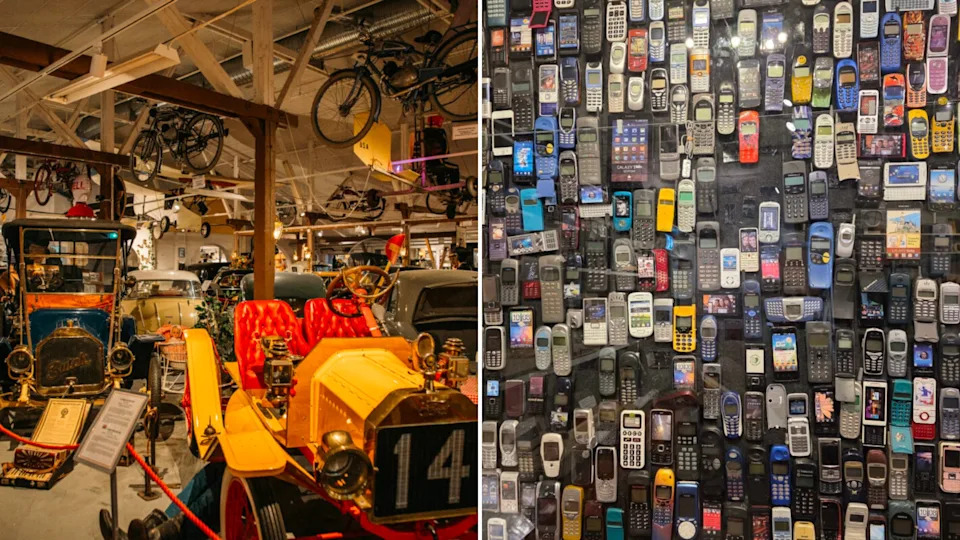
Downstairs, the hotel’s restaurant overlooks the harbor. Here, guests can have the staff grill their fresh fish while helping themselves to a buffet. It’s a relaxed place where you can sip a beer and bring your dog too.
I also stopped by Mallboden Café beside the Göta Canal Museum. Their folded waffles put them on the map. They’re easier to eat and oh so tasty. I had to make the difficult decision of choosing between sweet and savory. I ended up going with sweet, and was not disappointed!
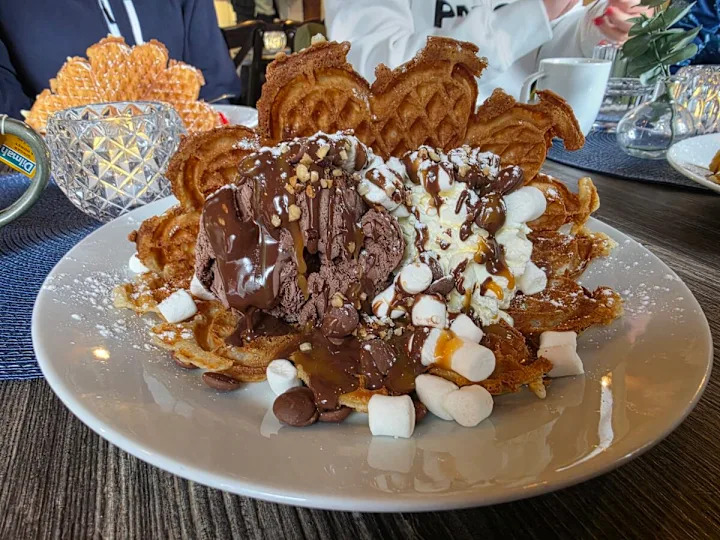 Along the Water to Borensberg
Along the Water to Borensberg
(Motala → Borenshult: 15 km / 9 mi)
From Motala, the path hugs the canal toward Borenshult, where five locks lift boats one step at a time. The mechanics date back to the 1800s, yet they run as smoothly as ever. Even travelers with no interest in engineering (like me!) pause to watch.
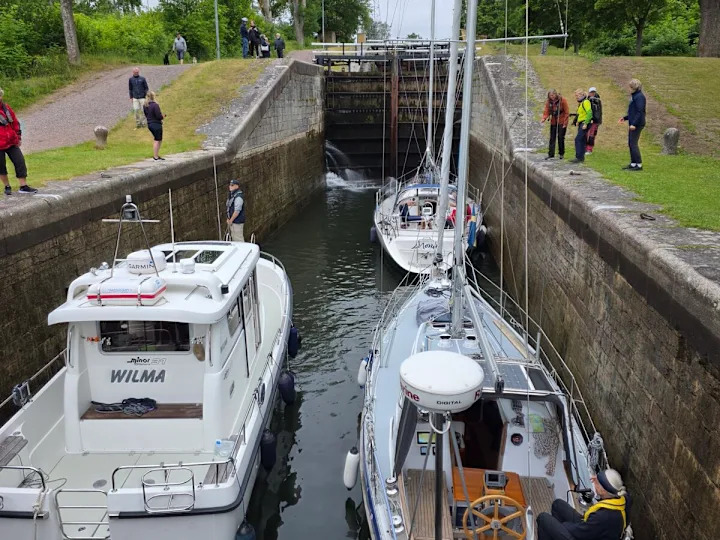
Lunch at Göta Hotell in Borensberg was one of the trip’s highlights for me. The seafood soup was flavorful without being too rich, and the hotel looks straight out of a postcard. If you’re cycling this stretch, make this your lunch stop.

Later that afternoon, rain rolled in. We took shelter at Högby Spa, warming up with coffee and pastries during a proper Swedish fika. If you enjoy cozy breaks between stretches of riding, this part of the route really delivers. (It also looks like a divine place to stop for a luxurious spa service.)
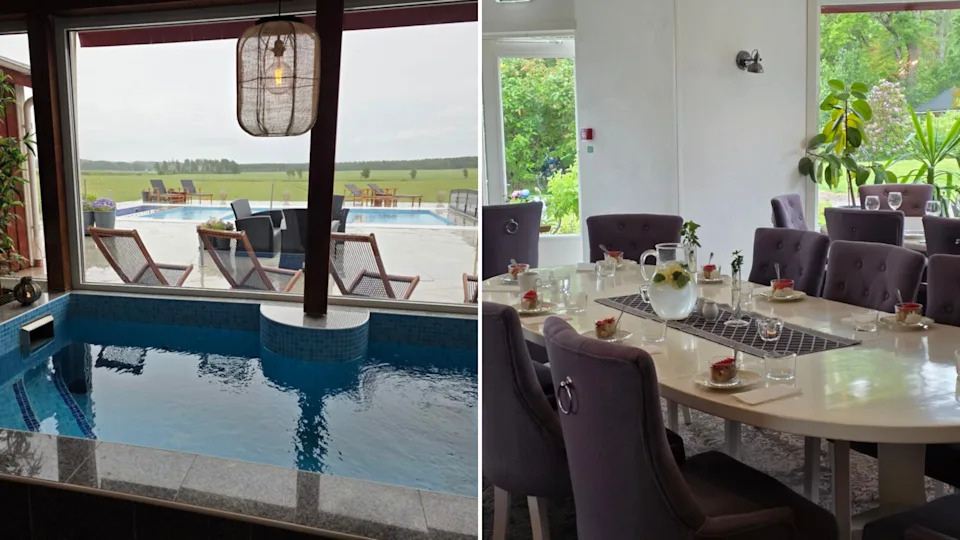 Sörby Glamping
Sörby Glamping
(Borenshult → Sörby Glamping: 25 km / 15 mi total, with a fika stop at Högby Spa)
By evening, we reached Sörby Glamping, a creative small-scale setup run by a former architect. She told me she started with one tent in her garden, and after a few curious guests and a local newspaper article, it grew into a successful seasonal business. Each tent has a different theme, from Japan to the Galápagos to a Harry Potter tent that’s especially popular with families.
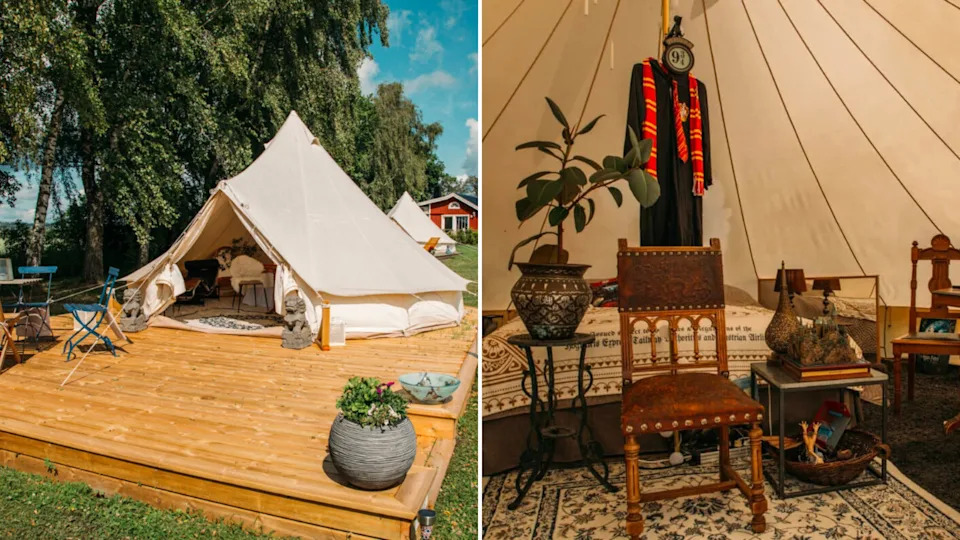
Guests need to plan dinner ahead. There’s no on-site restaurant, but a kitchen is available for those who bring food or pick something up nearby. The reward is privacy and some very unique accommodation choices.
Ljungs Slott and the Locks at Berg
(Sörby Glamping → Berg: 15 km / 9 mi)
The next morning’s ride passed Ljungs Slott, a beautiful manor linked to Axel von Fersen, rumored companion of Marie Antoinette. You can walk through without crowds or ropes. Local volunteers who maintain the manor are also happy to answer questions and give tours (sometimes even in impressive costumes).
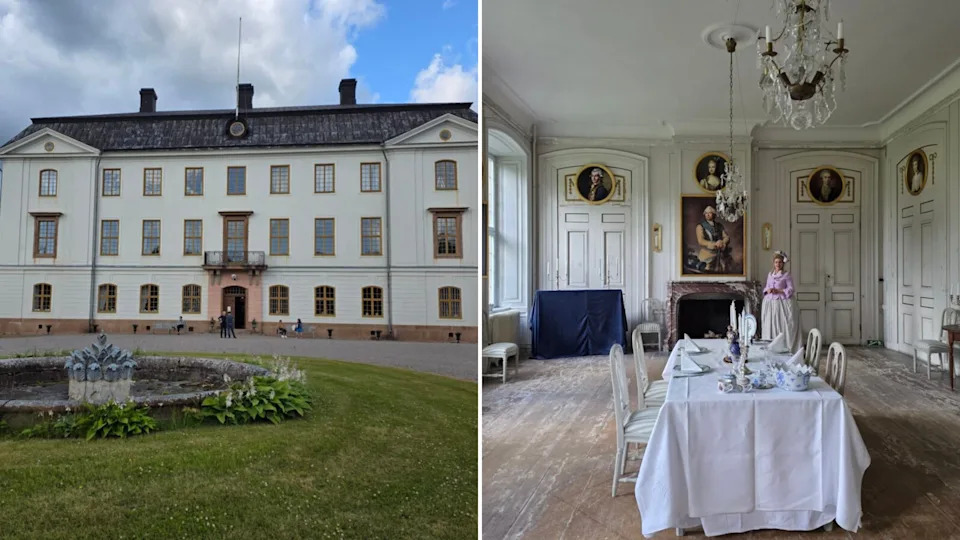
By late morning, we reached Berg, where a staircase of locks descends into Lake Roxen. Locals gather to watch the process. It’s hypnotizing and weirdly relaxing to witness.
I also had the chance to take a short ride on the M/S Juno, the world’s oldest registered cruise ship still in operation.

A crew member explained that the ship takes just forty-six passengers, serving traditional Swedish meals and sailing between Gothenburg and Stockholm. Most guests are older travelers who’ve dreamed about this trip for years. It’s a floating time capsule for people who appreciate slow, deliberate travel.
One of the passengers told me the food alone was reason enough to take this unique cruise. After seeing the menu and tasting some of the sweets they had on board, I would have to agree.
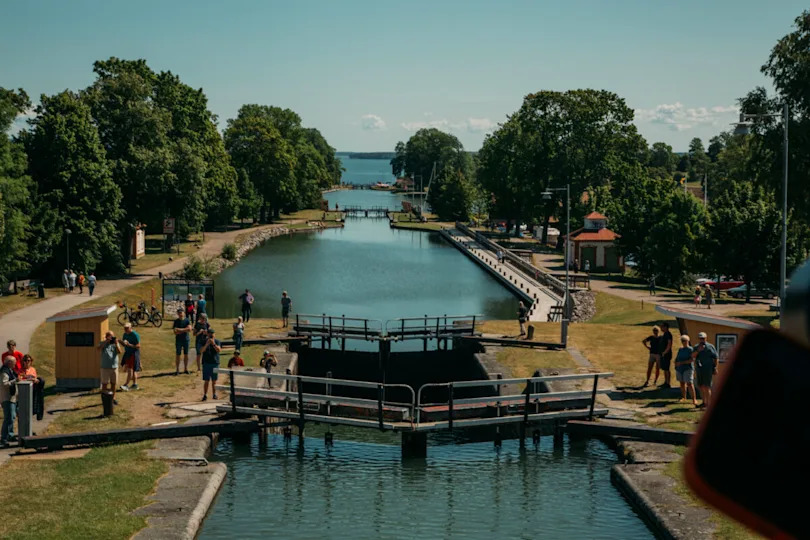 A Taste of the Past
A Taste of the Past
(Berg → Vreta Kloster: 2 km / 1 mi)
The next stop was Vreta Kloster Bryggeri, near the ruins of Sweden’s oldest abbey. The brewer poured a golden Belgian-style ale and told us its history.
“The nuns brewed beer here in the 1100s,” he said. “They drank it and gave it to the poor. This one uses Belgian yeast and orange peel for a bit of citrus.”

Hearing that while sipping the beer just a short distance from the abbey ruins gave it more weight than any tasting note could.
After the tasting, we visited the nearby Vreta Abbey. It’s quiet and beautifully preserved, surrounded by gardens and open fields. It made for a fitting final stop before heading back to Linköping.
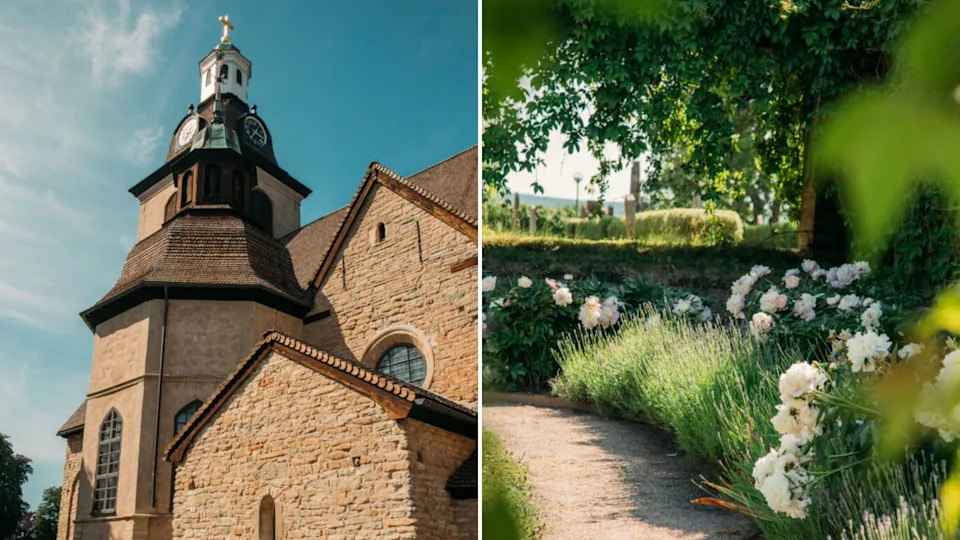 What to Know Before You Go
What to Know Before You Go
July is the busiest month for biking the Göta Canal, while early autumn offers cooler weather and fewer travelers. However, by late August, some businesses do switch to weekend hours. Be sure to double-check times if traveling outside the peak season.
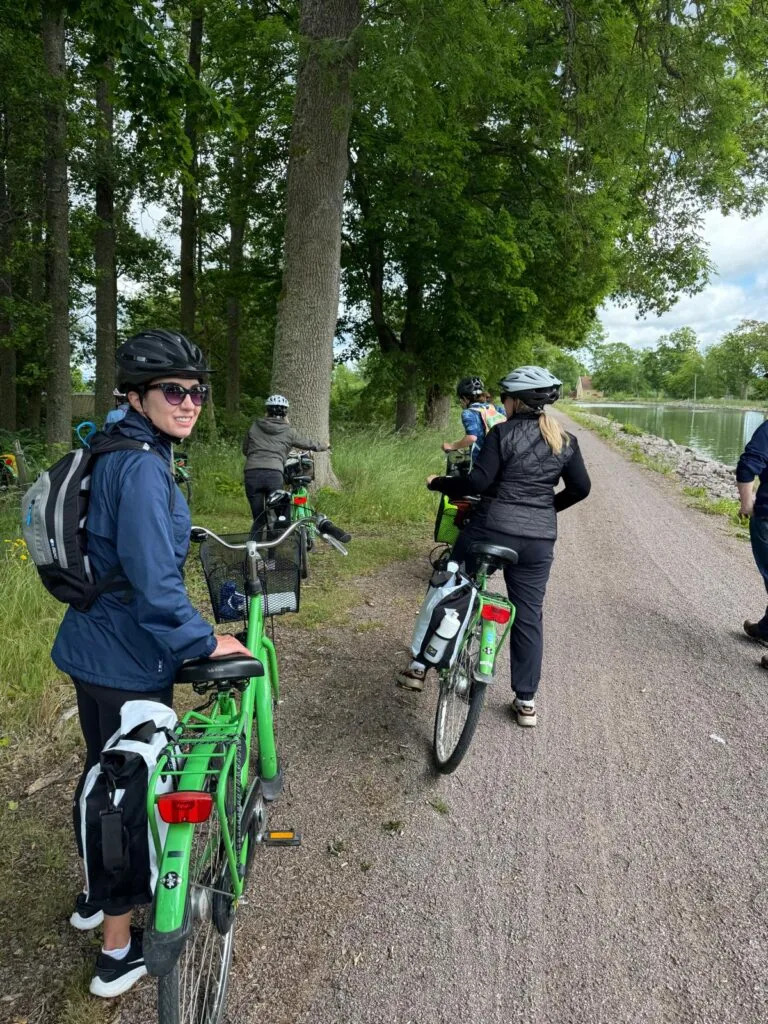
Packing tips:
Comfortable cycling clothes and shoes
Light jacket and warmer layer
Sunglasses, sunscreen, and rain gear
Reusable water bottle (tap water is excellent)
Credit card with PIN (Sweden is cash-free)
Adapter for U.S. or U.K. plugs
If your bike rental company does not provide one, be sure to bring along a dry bag for biking – there is nothing worse than having wet clothes!
And if you prefer camping, Sweden’s Allemansrätten, “the freedom to roam”, lets you pitch a tent almost anywhere for a night, as long as you respect private land.
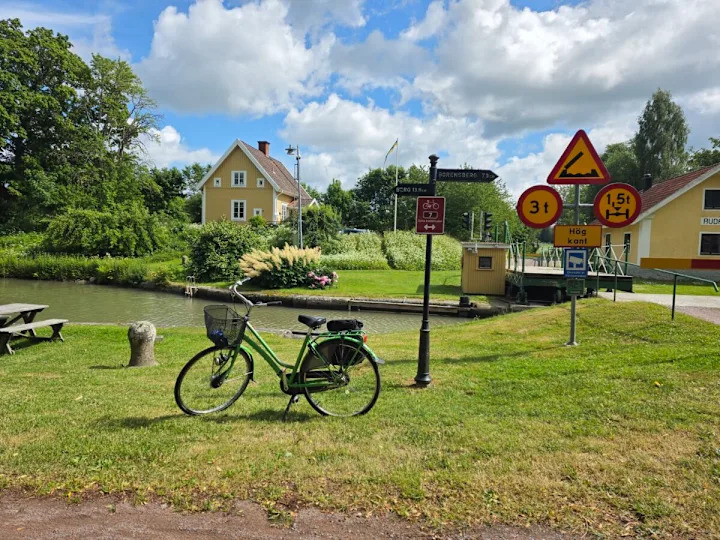 Who It’s For
Who It’s For
The Göta Canal is best for travelers who like biking. It’s ideal if you enjoy being outdoors, covering ground under your own power, and ending each day with good food and quiet landscapes. Couples, small groups, and families with older children will find the terrain manageable and the logistics easy.
If you’re not into cycling, you might find the days repetitive. (You can also check out taking a cruise along the canal if that is more your speed!) But for those who love time on a bike and want a simple, scenic way to see the Swedish countryside, this route delivers exactly what it promises: calm days, good food, and space to breathe.
Read more: The Best Meal of My Life Wasn’t in New York or Tokyo — It Was in the Forests of Dalarna, Sweden

